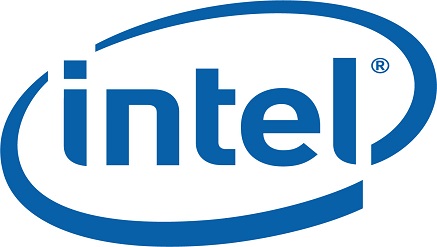E-Business
Intel’s McAfee Labs Predicts 14 Threat Trends in 2017

Intel® Security, Tuesday, released its McAfee Labs 2017 Threats Predictions Report, which identifies 14 threat trends to watch in 2017, the most critical developments to watch for in cloud security and the Internet of Things (IoT) security, and the six most difficult-to-solve challenges facing the cybersecurity industry.
The report reflects the informed opinions of 31 Intel Security thought leaders.
It examines current trends in cybercrime and makes predictions about what the future may hold for organizations working to take advantage of new technologies to both advance their businesses and provide better security protection.
“To change the rules of the game between attackers and defenders, we need to neutralize our adversaries’ greatest advantages,” said Vincent Weafer, vice president of Intel Security’s McAfee Labs. “As a new defensive technique is developed, its effectiveness increases until attackers are compelled to develop countermeasures to evade it. To overcome the designs of our adversaries, we need to go beyond understanding the threat landscape to changing the defender-attacker dynamics in six key areas: information asymmetry, making attacks more expensive, improving visibility, better identifying exploitation of legitimacy, improving protection for decentralized data, and detecting and protecting in agentless environments.”
2017 Threats Predictions
The 2017 threats predictions run the gamut, including threats around ransomware, sophisticated hardware and firmware attacks, attacks on “smart home” IoT devices, the use of machine learning to enhance social engineering attacks, and an increase in cooperation between industry and law enforcement:
Ransomware attacks will decrease in volume and effectiveness in the second half of 2017.Windows vulnerability exploits will continue to decline, while those targeting infrastructure software and virtualization software will increase.Hardware and firmware will be increasingly targeted by sophisticated attackers.
Hackers using software running on laptops will attempt “dronejackings” for a variety of criminal or hacktivist purposes.
Mobile attacks will combine mobile device locks with credential theft, allowing cyber thieves to access such things as banks accounts and credit cards.
IoT malware will open backdoors into the connected home that could go undetected for years.
Machine learning will accelerate the proliferation of and increase the sophistication of social engineering attacks.
Fake ads and purchased “likes” will continue to proliferate and erode trust.Ad wars will escalate and new techniques used by advertisers to deliver ads will be copied by attackers to boost malware delivery capabilities.Hacktivists will play an important role in exposing privacy issues.Leveraging increased cooperation between law enforcement and industry, law enforcement takedown operations will put a dent in cybercrime.
Threat intelligence sharing will make great developmental strides in 2017.Cyber espionage will become as common in the private sector and criminal underworld as it is among nation-states.Physical and cybersecurity industry players will collaborate to harden products against digital threats.
Cloud Security and Internet of Things Predictions
McAfee Labs also provided predictions for IoT and Cloud security during the next two to four years, including threat, economic, policy, and regional trends likely to shape each area.
Gathering insights from Intel Security researchers, the following predictions also anticipate the responses we expect to see from device manufacturers, cloud service providers, and security vendors.
The Cloud predictions touched on topics such as trust in the cloud, storage of intellectual property, antiquated authentication, east-west and north-south attack vectors, gaps in coverage between service layers, for-hire hackers in the cloud, “denial of service for ransom” attacks, IoT implications for cloud security models, laws and litigation versus innovation, movement of data across borders, biometrics as cloud enablers, cloud access security brokers (CASBs), protection of data at rest and in motion, machine learning, cyber insurance, and ongoing conflicts pitting speed, efficiency, and cost against control, visibility, and security in cloud offerings.
The IoT predictions focused on cybercrime economics, ransomware, hacktivism, nation-state attacks on criminal infrastructure, challenges for device makers, privacy threats and opportunities, encryption, behavioral monitoring, and cyber insurance and risk management.
Six Critical Industry Challenges
The difficult-to-solve problems section of the report challenges the industry to improve threat defense effectiveness by reducing information asymmetry between defenders and attackers, making attacks more expensive or less profitable, improving visibility into cyber events, better identifying exploitation of legitimacy, improving protection for decentralized data, and detecting and protecting in agentless environments.
McAfee Labs is the threat research division of Intel Corporation’s Intel Security Group, and one of the world’s leading sources for threat research, threat intelligence, and cybersecurity thought leadership.
The McAfee Labs team of researchers collects threat data from millions of sensors across key threat vectors—file, web, message, and network.
It then performs cross-vector threat correlation analysis and delivers real-time threat intelligence to tightly integrated McAfee endpoint, content, and network security products through its cloud-based McAfee Global Threat Intelligence service.
McAfee Labs also develops core threat detection technologies—such as application profiling, and graylist management—that are incorporated into the broadest security product portfolio in the industry.
E-Business
Amazon CEO Says AI will Reduce Number of Workers Needed

Amazon’s management on Wednesday said that it expects that artificial intelligence software will reduce the number of office workers at the world’s largest online retailer.

Andy Jassy, chief executive, Amazon
“We will need fewer people doing some of the jobs that are being done today and more people doing other types of jobs,” Andy Jassy, chief executive, Amazon wrote in an email to employees.
He said it was difficult to predict how the overall workforce will evolve, but in the next few years, it is expected that AI efficiency gains will lead to a reduction in the number of office workers.
According to earlier reports, Amazon employed around 1.5 million people worldwide, with approximately 350,000 office employees in various roles.
The Wall Street Journal reported that the company does not anticipate further large-scale layoffs, as seen in 2022 and 2023, in the near future.
Instead, it expects that vacant positions will not be refilled.
However, layoffs are not ruled out, according to sources familiar with the matter.
“Amazon is focusing on so-called AI agents, software capable of independently performing tasks. These agents could, for example, summarise information from the web and data sources, write software, translate languages and automate many time-consuming tasks,” Mr Jassy explained.
“Agents will be teammates that we can call on at various stages of our work,” he added, urging employees to experiment with AI whenever possible.
The impact of AI on the job market has been a concern for many years.
Recently, Spotify, the leader in music streaming, announced that teams requesting additional staff would first need to prove that AI could not perform the tasks.
The creators of the language-learning app Duolingo plan to gradually replace external workers with AI.
E-Business
BPP Partners NDPC to Strengthen Data Protection

Dr Adebowale Adedokun, director-general, Bureau of Public Procurement (BPP), has reaffirmed the bureau’s commitment to data protection in Nigeria.

He disclosed this in a statement at the weekend by Zira Nagga, head of Public Relations, BPP, following a courtesy visit by a delegation from the National Data Protection Commission (NDPC).
Adedokun stressed that data protection is vital to Nigeria’s economy and development, particularly in areas such as demography, health, education, and other key sectors.
He emphasised that no country should leave its data unprotected, as it plays a crucial role in future planning and national development.
“Data governs the world. It is essential to technological progress and must be protected for a country or business to be taken seriously,” he said.
Adedokun described the visit, aimed at fostering partnership on data policy implementation and protection, as timely and aligned with national goals.
He said the BPP would collaborate closely with the NDPC to boost data development, capacity building, and enhance the procurement system.
“The BPP will support compliance as part of the ‘Nigeria First’ Policy, although it is not a core procurement eligibility requirement,” he explained.
He suggested a hybrid training model to help build strong capacity in data protection, privacy awareness, and policy understanding.
According to him, a dynamic training approach will reduce logistics costs and improve public confidence in data safety and privacy.
Dr Vincent Olatunji, CEO, and national commissioner, NDPC, praised Adedokun and the BPP for supporting data protection initiatives.
He said the partnership supports President Bola Tinubu’s vision and will strengthen data privacy across Ministries, Departments, and Agencies (MDAs).
“The collaboration will create awareness and train BPP staff to ensure a firm grasp of data protection principles and policies,” he stated.
Olatunji said the NDPC would establish a working group to finalise a Memorandum of Understanding beneficial to both institutions.
He added that President Tinubu signed the NDPC into law on 12 June 2023 to uphold citizens’ rights and protect national and business data.
Olatunji also noted that strict legal measures were in place to enforce data protection and ensure full compliance nationwide.
Both agencies agreed to form a team to sign the MoU and focus on capacity building and data management in procurement and beyond.
E-Business
FG Mulls Fibre Optic Layout to Bridge Internet Gaps

President Bola Tinubu said that his administration has initiated a project to install fibre optic cables across the country, aimed at enhancing the socio-economic development of Nigeria.

His plans were contained in a speech he delivered at a joint session of the National Assembly in commemoration of Democracy Day on Thursday, June 12.
He said the fibre optic layout is part of other projects being embarked on.
“In addition, we have embarked on an ambitious project to lay fibre optic cables across the nation, a transformative step toward bridging the digital divide and fostering greater connectivity.
“This initiative promises not only to enhance the speed and reliability of internet access but also to revolutionise how businesses operate, how students learn, and how communities stay connected,” Tinubu stated.
He maintained that by extending this critical infrastructure, his government is empowering entrepreneurs, enabling digital education, and providing the tools for our youth to compete in a globalised world.
In a most recent report on Internet connectivity, The ICIR pointed out how Nigeria has faced setbacks in its deployment of fibre optic cables and needs a transformation.
The challenges revolve around vandalism, inadequate coordination between road construction and telecom infrastructure, and varying right-of-way (RoW) charges across states.
Among industry experts, these issues impact network outages, increase repair costs, and hinder broadband expansion efforts.
It has also further threatened the digital economy, leading to slower Internet speeds, dropped calls, and unreliable connectivity among others.

 Telecom2 days ago
Telecom2 days agoGSMA, Mobile Industry Call for Strengthened Action to Advance Child Online Protection in Africa

 Telecom1 day ago
Telecom1 day agoALTON Clarifies on Migration to End-User Billing for USSD Services

 News2 days ago
News2 days agoDigital Africa Global Consult, NDPC Partner on Ground-Breaking “Nigeria Data Challenge” Initiative

 General News2 days ago
General News2 days agoTD Africa, HP Strengthen Partnership to Advance Africa’s Tech Ecosystem

 E-Financial1 day ago
E-Financial1 day agoNigerian Stock Market Suffers ₦183 Billion Loss Amid Profit-Taking

 News1 day ago
News1 day agoDStv Rewards Loyal Customers with Free Package Upgrades

 Telecom1 day ago
Telecom1 day agoLagos Future Conference 2025: Stakeholders Call for Digital Responsibility and Grassroots Innovation

 General News1 day ago
General News1 day agoAfrican Parliamentarians Seek Answers from Telcos on Quality of Service
















